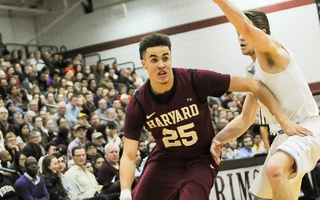Last week, the Bertarelli Program, a collaboration between Harvard Medical School and the École Polytechnique Fédérale de Lausanne in Switzerland, announced that it will award a series of grants totaling $3.6 million to launch five research projects in neuroengineering.
The five projects will launch in January, each a three-year partnership between doctors and scientists at HMS and bioengineers at EPFL. Three of these projects will focus on developing new methods to diagnose and treat deafness, while the fourth will develop cell transplantation strategies to reverse blindness. The fifth project will deal with difficulties in diagnosing children with autism.
“We wanted to link neuroscientists and engineers in order to bring the knowledge that has been developed in neuroscience over the last forty years to engineering solutions that help bring it to clinical practice,” said David J. Corey, director of the Bertarelli Program and an HMS professor of neurobiology.
Each project was allotted $720,000 to split between the two collaborating labs. According to Corey, this sum was chosen so that each lab could have $120,000 each year, which would be sufficient to completely support one person plus their annual expenses. Each lab could then have one person completely dedicated to the project.
Jeffrey R. Holt, associate professor of Otology and Laryngology at HMS and a recipient of one of the grants, said he hopes to use the funding to develop gene therapy to treat inherited hearing loss. His project will focus on treating mutated genes in mice, as the mutations in their sensory cells also cause deafness in humans. His lab at the Boston Children’s Hospital will partner with a team at EPFL to introduce the properly formed genes into these ear cells, which undergo similar mutations to human cells.
“We are able to manipulate the genome of the virus, and then we can ‘engineer in’ the correct form of the gene that might cause deafness when mutated,” Holt said. According to Holt, the Swiss group will be responsible for generating the viral vectors, which the inner ear specialists in Boston can then inject into the ears of the mice.
Corey said that the Bertarelli Program in Translational Neuroscience and Neuroengineering chose the five projects to fund based partly on the possibility for clinical applications. The projects were selected by a panel composed of representatives from both Harvard and EPFL, one of the goals being to advance research in the treatment of motor and sensory disorders.
“What we really hope is that each project will build on basic neuroscience, but use engineering strategies to bring that knowledge closer to clinical care,” Corey said. “It’s a real chain that brings different expertise in each case.”
Read more in University News
With Inaugural Success, HBX Eyes ExpansionRecommended Articles
-
Nobel Laureate Biochemist Bloch DiesKonrad Emil Bloch, 88, a Harvard University professor emeritus of biochemistry, died of congestive heart failure on Oct. 15. He
-
Yard-Yale TennisAfter losing its match with the Harvard Grads Saturday afternoon by the overpowering score of 12 to 1, the freshman
-
Researchers Discover Hearing ProteinHarvard researchers have identified the most important protein involved in hearing, which may be the first step toward eventual gene
-
 Men's Basketball Unable To Finish Against Holy Cross
Men's Basketball Unable To Finish Against Holy Cross -
 Notebook: Cold Shooting Night Dooms Men's Basketball Against Penn
Notebook: Cold Shooting Night Dooms Men's Basketball Against Penn













